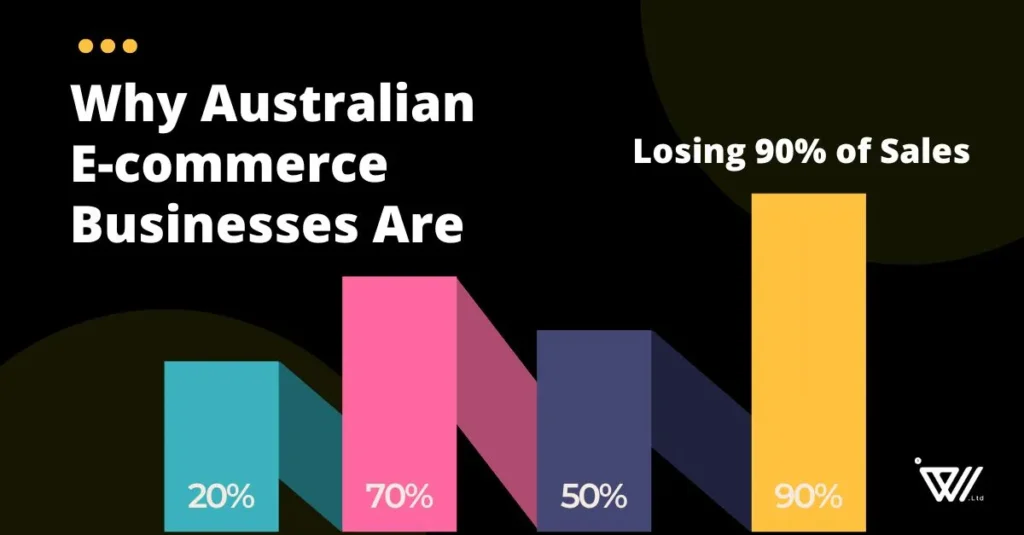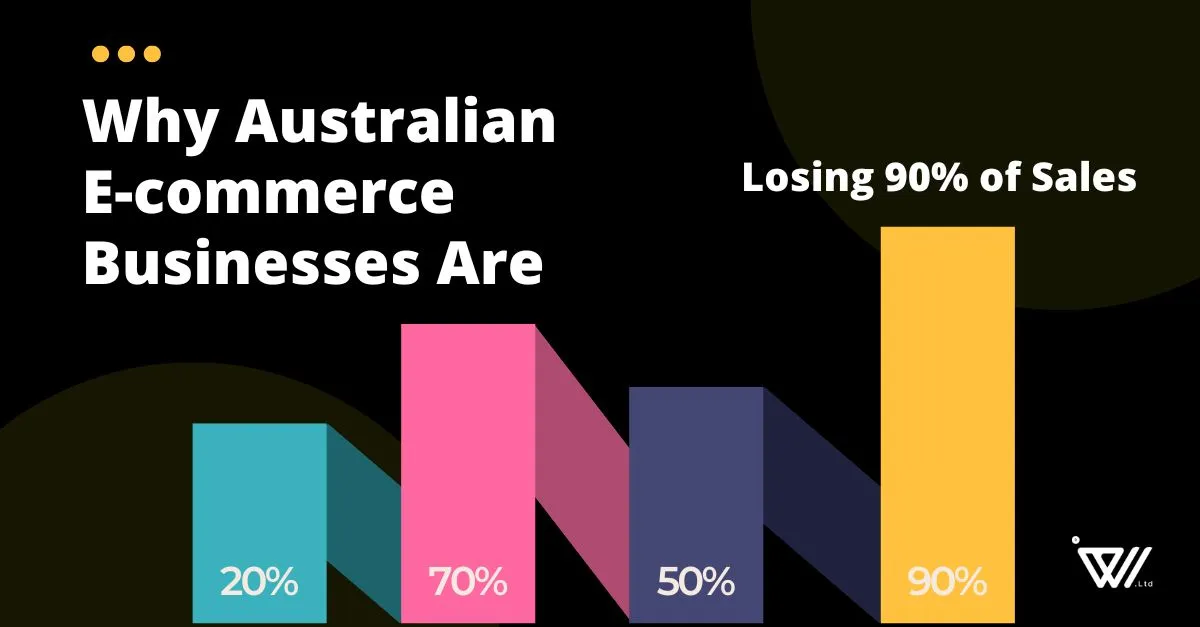5 Reasons Why Australian Ecommerce Businesses are Losing Sales
Despite the booming e-commerce and retail markets in Australia, are you finding your sales heading downward instead of upward? Wondering what could be causing this unexpected trend? Look no further.
In this blog, we delve into the factors behind the decline in sales and explore potential solutions to help you turn the tide. Join us as we discover the answer to the question of why Australian ecommerce businesses are losing sales.
Here are some statistics from @Statista that highlight the constant growth of the e-commerce and retail markets in Australia:
- Revenue in the eCommerce market is projected to reach US$37.66 billion in 2024.
- The annual growth rate (CAGR) for 2024–2029 is expected to be 9.39%, leading to a projected market volume of US$58.99 billion by 2029.
- The number of users in the eCommerce market is expected to reach 23.1 million by 2029.
- User penetration is forecast to be 65.3% in 2024 and is expected to increase to 84.4% by 2029.
- The average revenue per user (ARPU) is anticipated to be US$2,205.00.
Despite this promising growth, why Australian ecommerce businesses are losing sales? Let’s not wait any longer and identify those problems and find solutions together!
Table of Contents
The Reasons Why Australian Ecommerce Businesses Are Losing Sales

1. Virtual Assistants and Chatbots
Online shoppers expect seamless assistance while navigating e-commerce platforms in today’s digital era. Customers may abandon shopping carts without virtual assistants and chatbots to provide real-time support. With rising technological advancements, the absence of these features can lead to decreased sales figures and result in one of the reasons why Australian ecommerce businesses are losing sales.
2. Consumer Data Protection
Personalisation and consumer data protection are essential in e-commerce. Recent reports of data breaches have shattered customer trust in online shopping. So while giving a personalised experience in the buying journey, most e-commerce businesses need to remember to provide customer data protection, which is one of the reasons why Australian ecommerce businesses are losing sales.
Also Read: Retail Success: Personalised Customer Engagement Platforms
3. Digital Payment Solutions and E-wallets
Streamlining the payment process is critical for reducing cart abandonment rates. Customers may encounter friction during checkout without user-friendly digital payment solutions and e-wallet options, leading to lost sales opportunities and frustrated shoppers. That’s one of the significant reasons why Australian ecommerce businesses are losing sales.
4. Mobile Commerce Solutions
The widespread usage of smartphones has led to an increase in the popularity of mobile commerce. Failing to provide a seamless mobile shopping experience, including an intuitive app design and a smooth user journey, can deter mobile shoppers and contribute to declining sales figures. It also leaves a bad impression of your brand on your customers, which is one of the reasons why Australian ecommerce businesses are losing sales.
5. Multi-Currency Payment
Offering multi-currency payment options is essential for catering to international customers. Without this feature, potential buyers may abandon their carts due to the lack of payment options for their preferred currency. Thus, the absence of multi-currency payment solutions hinders global growth opportunities for Australian e-commerce businesses. It has also become the reason why Australian ecommerce businesses are losing sales.
Conclusion
In conclusion, while the e-commerce and retail markets in Australia are experiencing significant growth, many e-commerce businesses face the troubling issue of declining sales. This unexpected downturn prompts us to ask why Australian ecommerce businesses are losing sales.
Despite the promising projections for the e-commerce market, Australian businesses struggle to help customers and maximise sales potential. Key factors such as the absence of virtual assistants and chatbots for real-time customer support, a lack of consumer data protection, and friction in the payment process contribute to this challenge.
Additionally, the failure to provide a seamless mobile shopping experience and multi-currency payment options further affects businesses’ ability to attract and retain customers, especially in an increasingly globalised e-commerce market.
By addressing these critical issues and implementing tailored solutions, Australian e-commerce businesses can reverse the trend of declining sales and capitalise on the immense growth opportunities in the ecommerce market. Let iWebwiser embark on this journey together to identify and overcome the obstacles to your business success. With iWebwiser’s tailored solutions, you can get the solutions you are looking for and grow your e-commerce business in this competitive digital market.
GET TAILORED SOLUTIONS!
Get a Free Call
FAQs:-
Q: What is the biggest problem with e-commerce?
A: Biggest Challenges of eCommerce Are:
• Intense competition
• Customer Acquisition
• Abandoned Shopping Cart
• Limitations in Website Performance
• Lack of Mobile-friendliness
• Unoptimized Inventory
• Logistics Gaps
• Poorly-framed Returns and Refunds Policies
Q: How can I increase my e-commerce sales?
A: You can increase your e-commerce sales by implementing these strategies:
• Improve your sales funnel
• Launch a paid ad campaign
• Partner with an influencer
• Use social media marketing
• Enable in-app shopping
• Start an email marketing campaign
• Improve your e-commerce site’s user experience
Q: Why isn’t my online store selling anything?
A: Your online store may not be generating sales due to either a traffic or conversion problem. If it lacks sales, it could be attributed to insufficient traffic or missing essential elements in your website design.
Q: What is the biggest issue with most online retail?
A: Top E-commerce Challenges Faced by Retailers Are:
• Choosing the right products
• Identifying your target audiences
• Positioning your products
• Developing effective sales and marketing messages
• Allocating digital marketing budgets
• Building a paid ad strategy
• Establishing social proof
• Designing a user-friendly online store

One thought on “5 Reasons Why Australian Ecommerce Businesses are Losing Sales”
Great insights in your blog! The points about customer experience and competitive pricing were particularly eye-opening. This article is a must-read for anyone looking to improve their eCommerce business.